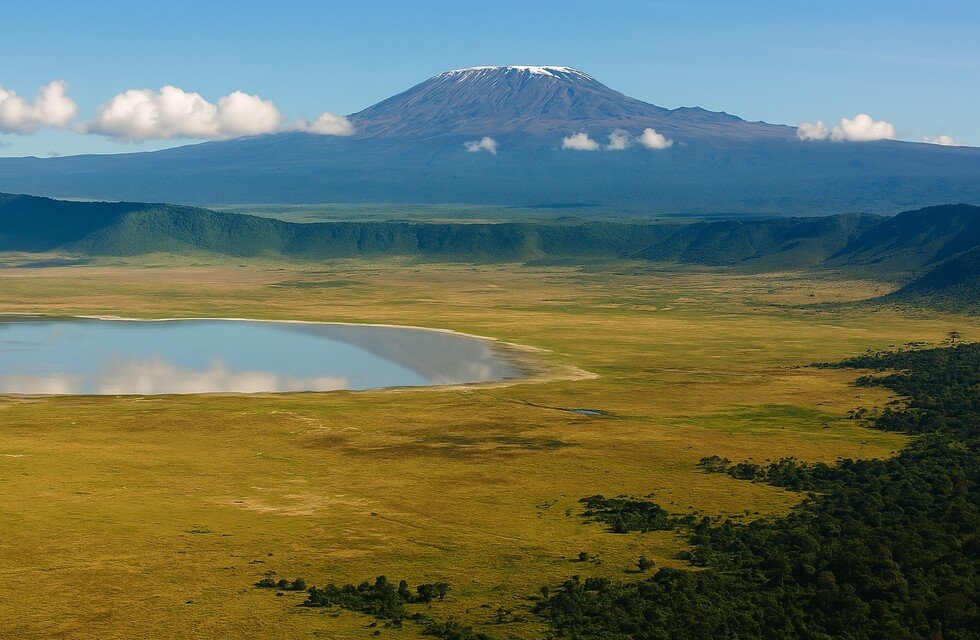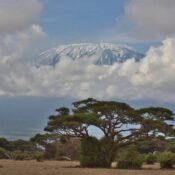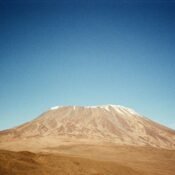
From Crater Floors to Mountain Peaks: Exploring Tanzania’s Diverse Terrain
Tanzania is a land where the earth seems to have been sculpted by the imagination of nature itself. Few places on Earth offer the geographical diversity that Tanzania does—from the lush floor of Ngorongoro Crater to the snow-capped summit of Mount Kilimanjaro. This East African gem is not just about safaris; it’s a destination that showcases the drama of shifting ecosystems, soaring altitudes, and some of the most stunning landscapes in the world.
For travelers, adventurers, photographers, and nature lovers, exploring Tanzania’s diverse terrain is like flipping through the pages of a living geography book. Each destination tells its own story, each environment brings its own surprises, and every step takes you deeper into one of Africa’s most captivating countries.
Ngorongoro Crater: A Natural Wonder
Let’s start with one of Tanzania’s most iconic and fascinating terrains—the Ngorongoro Crater. Often dubbed the “eighth wonder of the world,” this massive volcanic caldera is not only breathtaking in scale but also in ecological significance.
Formed around two to three million years ago when a massive volcano exploded and collapsed on itself, the crater now spans 260 square kilometers with walls rising up to 600 meters. Inside this natural enclosure thrives one of the most concentrated populations of wildlife anywhere in Africa, including black rhinos, lions, elephants, and flamingos around the soda lake.
The terrain here is incredibly varied within a small space—grassy plains, acacia woodlands, swamps, and a salt lake all coexist in harmony. And the visual beauty of driving down into the crater with morning mist still hovering above the plains is an experience that stays etched in your memory forever.
Serengeti Plains: The Endless Horizon
Moving from the bowl of the Ngorongoro Crater to the open vastness of the Serengeti, we find a landscape that contrasts sharply in terms of both scale and atmosphere. The Serengeti is iconic for its seemingly endless savannah—a place where the sky feels enormous and the grasslands stretch beyond sight.
The terrain here is flat but alive. You’ll encounter acacia-dotted plains, rocky outcrops known as kopjes, and rivers winding quietly through the landscape. This diversity supports the Great Migration—one of the most awe-inspiring wildlife events on Earth. Over two million wildebeest, zebras, and gazelles move in a rhythmic cycle across the Serengeti and into Kenya’s Maasai Mara, creating a natural spectacle of life, death, and rebirth.
But the Serengeti is more than just a stage for wildlife drama. It’s a place that allows you to truly feel the scale and openness of Africa. Standing amidst this golden sea of grass, with the wind rustling through the savannah and herds passing in the distance, you understand why the Serengeti is so spiritually and culturally powerful.
Lake Natron: A Landscape from Another Planet
Head further northeast and you’ll stumble upon a landscape so alien, it almost feels like stepping onto another planet. Lake Natron is a strikingly beautiful, yet hauntingly surreal, soda lake near the Kenyan border. Its crimson-hued waters are caused by salt-loving microorganisms, and its surface is often dotted with mirror-like reflections of the clouds and mountains around it.
Lake Natron sits at the base of Ol Doinyo Lengai, an active volcano revered by the Maasai as the “Mountain of God.” The surrounding terrain is rugged, rocky, and hot—almost lunar in its atmosphere. The lake is a breeding ground for lesser flamingos, adding a splash of life to an otherwise quiet, dreamlike environment.
Here, the sense of isolation is profound. It’s not just a destination; it’s a place that challenges your idea of what landscapes should look and feel like.
Tarangire National Park: The Land of Giants
In the northern safari circuit, Tarangire National Park offers a different flavor altogether. The park’s terrain is characterized by undulating hills, ancient baobab trees, and the Tarangire River that cuts through the park like a lifeline. During the dry season, this river becomes a magnet for animals, especially elephants, making it one of the best spots in Tanzania to see these gentle giants in large numbers.
The land here feels more textured. Walking through Tarangire, you’ll encounter dusty trails, dry riverbeds, and grasslands that give way to forests of towering baobabs and acacias. The contrast between dry and green zones during the wet season also paints the landscape in dramatically different hues.
Mount Kilimanjaro: The Roof of Africa
And now we ascend—literally. Mount Kilimanjaro is not just Tanzania’s crown jewel, but Africa’s tallest peak, rising to 5,895 meters. This free-standing mountain dominates the landscape with its snow-capped summit, making it a global magnet for trekkers and mountaineers.
But climbing Kilimanjaro is not just about the summit. What makes it truly unique is the series of ecological zones one passes through along the way. You begin your ascent in lush montane forests, filled with monkeys and towering trees. As you climb higher, the terrain changes—into moorlands dotted with giant lobelias, then into alpine desert, and finally, into the icy glaciers at the top.
It’s a journey through five different ecosystems in just a few days—an experience that’s both physically challenging and spiritually uplifting. Whether or not you reach the summit, trekking Kilimanjaro gives you a front-row seat to some of the most breathtaking terrain transitions on Earth.
The Coastal Plains and Zanzibar: A Soothing Contrast
Tanzania’s terrain diversity wouldn’t be complete without mentioning its coastline and offshore islands. After the dust and drama of the interior, the warm breezes and white sands of places like Zanzibar, Pangani, or Mafia Island offer a welcome change.
Here, the terrain is soft and slow—palm-fringed beaches, shallow coral reefs, and sleepy fishing villages dot the coastline. It’s a place where time stretches out, just like the tides, and the only sounds are lapping waves and the creaking of a dhow boat.
A Journey Through Contrast and Harmony
What makes Tanzania’s terrain so exceptional isn’t just the individual beauty of its landscapes, but how dramatically different they are from one another. In a single trip, you could descend into a volcanic crater, track lions across open plains, walk beside flamingos in a caustic lake, and climb to the icy roof of Africa.
Each place reveals a different facet of the country’s natural soul. The dramatic elevation changes, the shift in climates and colors, and the coexistence of ecosystems make Tanzania a dream destination for those who seek variety and awe-inspiring scenery.
So whether you’re a thrill-seeker scaling Kilimanjaro, a wildlife enthusiast exploring the savannah, or a soul searcher soaking in the stillness of a crater floor—Tanzania’s terrain has a story to tell you. And it’s one you’ll never forget.




